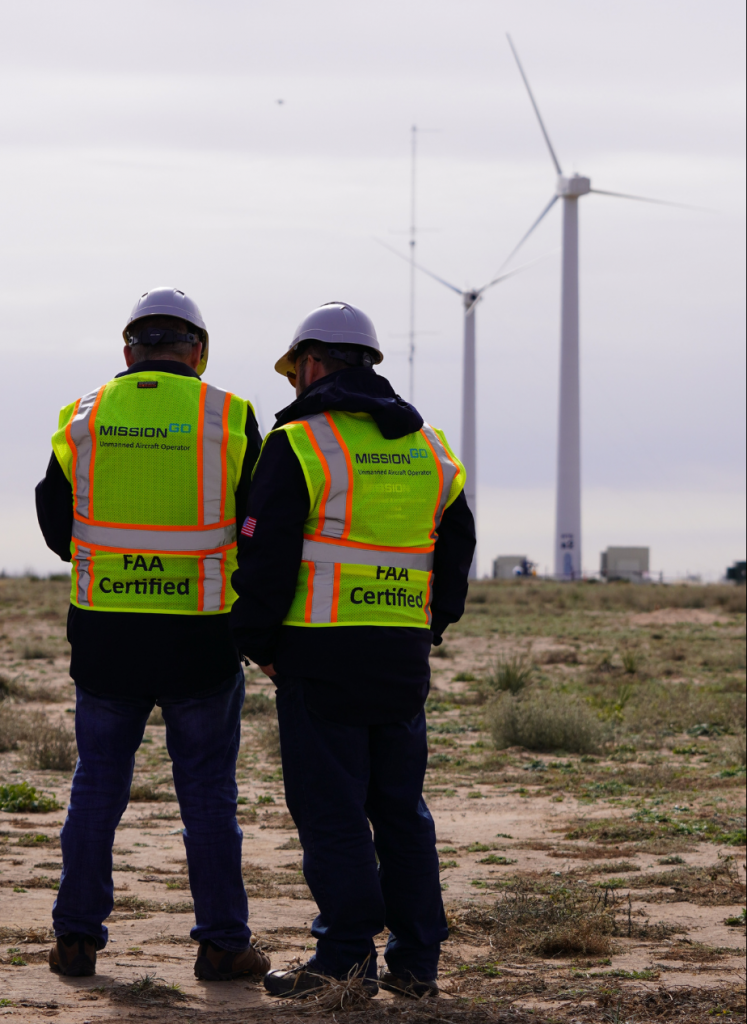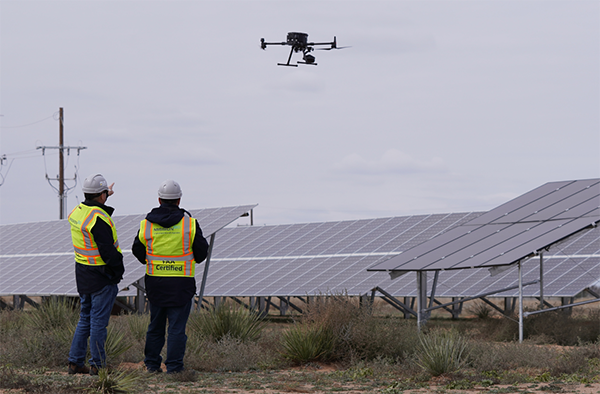In a nation where a good amount of its infrastructure is more than 30 years old, cost-effective and efficient inspections, maintenance, and repair of critical infrastructure is becoming more and more necessary. MissionGO has performed a series of uncrewed aircraft vehicle (UAV or drone) inspections on aging and new green energy solutions at Reese Technology Center to showcase the ease, impact, and savings achieved by implementing and deploying this new technology. The Matador Uncrewed Aerial System (UAS) Consortium, co-developed by Texas Tech University Health Sciences Center and 2THEDGE, LLC and supported by MissionGO, is an industry & university partnership improving rural communities through BVLOS UAS Operations, as a larger showcase of uncrewed aircraft opportunities.

In a recent operation, MissionGO completed a visual inspection of wind turbines and solar panels owned by Sandia Labs in partnership with the Texas Tech Wind Institute. Visual inspections are critical to utility maintenance as they are a thorough review of the entirety of a utility unit. They uncover components that are in need of repair or updating, saving money, time, and energy by locating the source rather than replacing the entire unit. While the inspections completed were visual and on specific infrastructure, UAVs provide a much wider set of options for gathering data. Drones can carry a range of sensors including LiDAR for high profile data collection, methane sniffers for quick leak source detection, multispectral sensors for agriculture, thermal cameras for heat detection, and much more.
The Panhandle of Texas is home to over 11,000 wind turbines across 150 wind farms. It is estimated that at least 5,500 wind turbines are over 50% towards end of life increasing the risk of catastrophic failure. Having multi-spectrum imaging solutions collecting data via UAS platforms can help improve operational efficiency and reduce down time of these critical resources.
“The inspection work being showcased here in Texas can be replicated nearly anywhere in the world,” says Chris Corgnati, President of MissionGO. “Drones are presenting real and current cost and time savings, not to mention the impact of keeping grids online and communities connected.”
With the goal of improving the lives of rural communities, MissionGO and the Matador UAS Consortium set out to show the value of using drones to conduct various types of inspections. Cost savings on using UAS for bridge inspections is estimated at $783 million nationwide. Surveillance and inspection times for wind turbines and solar farms could be cut by 30-50% and the time for oil and gas pipelines could be cut by nearly 90% by implementing UAVs.
The community benefits here almost do not need to be listed – cost savings at a corporate level trickle down to cost savings for the end user; more efficient green energy makes it easier for communities to take advantage of clean sources; and connected communities are safer for residents. The time savings, cost reduction and community benefits are enough to demonstrate the significance UAS could play in this industry.



